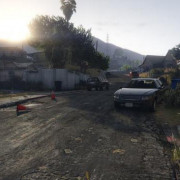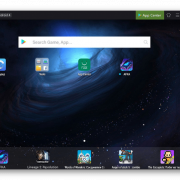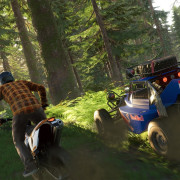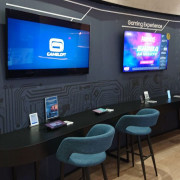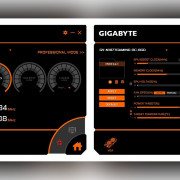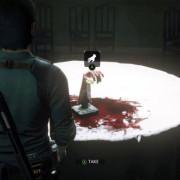Mcedit
Содержание:
Фильтры
Для применения фильтров необходимо выделить область воздействия.
| Фильтр | Действие |
|---|---|
| Classic water flood | Заполнение выделенной области водой или лавой не перезаписывая блоки. |
| Smooth | Смягчает перепады высот. |
| Setbiome | Меняет биом выделенной зоны с сохранением всех их особенностей. |
| Banslimes | Запрещает спаун слизней в выделенной зоне. |
| Forester | Создаёт одно большое дерево из указанных блоков. |
| Topsoil | Покрывает выделенную область указанными блоками с заданной толщиной слоя. |
| Change mob properties | Меняет характеристики и NBT-данные мобов. |
| Colorwires | Перекрашивает провода схем красного камня с помощью шерсти любого цвета. |
| Create busses | Соединяет отрезки схем красного камня. |
| Add potion effect to mobs | Позволяет наложить на мобов эффекты зелий. Можно выбрать эффект, его уровень и длительность. |
| Decliff | Превращает горы в холмы, а холмы в равнину. |
| Create spawners | Создаёт спаунеры всех попавших в зону выделения на момент срабатывания фильтра мобов. Все NBT-данные (цвет шерсти овец, экипированные вещи, блок в руках странника Края и т. д.) мобов сохраняются в спаунере. |
| Chunk surface repair | «Чинит» неправильно сгенерировавшиеся участки карты. |
| Make mobs invincible | Накладывает на мобов эффект «cопротивление урону» десятого уровня, из-за чего те становятся неуязвимыми. |
| Create shops | Все сундуки в зоне воздействия сменятся на деревенских жителей (вид жителей выбирается в окне фильтра), которые продают вещи по столбцам. Первые две строки сундука — вещи, которые нужно отдать за покупку. Третий слот — полученная вещь. Количества необходимых и получаемых вещей соответствуют количеству лежащих в сундуке. NBT-данные (цвет шерсти, повреждение и зачаровывания вещей и прочее) поддерживаются лишь в отданных жителем вещах, а в полученных им не имеют влияния. В случае, если выделен двойной сундук, на его месте будет 2 жителя (результаты варьируются, лучше выделять по одному). Так же, в окошке опций фильтра можно добавить жителю закрытые (неиспользуемые) сделки, сделать его неуязвимым (аналогично предыдущему фильтру), либо сделать все его доступные сделки незакрывающимися (бесконечными). |
| MobGear | Фильтр позволяет создавать своих мобов. Для этого нужно создать сундук с вещами, которые будет использовать моб. Первый слот отвечает за предмет, который будет у него в руках. Второй — шлем или дроп. Третий — нагрудник или дроп. Четвёртый — поножи или дроп. Пятый — ботинки или дроп. Если во 2, 3, 4 или 5 слоте будет броня, то у неё будет шанс дропа как у обычных мобов. |
Running from source
Requirements
These programs and packages are required:
General
- git
- Python 2.7+ (Python 3 is unsupported)
- virtualenv (not strictly required, but highly recommended)
Python packages
- PyOpenGL 3.1.1a1
- PyOpenGL-accelerate 3.1.1a1
- numpy 1.15.0
- Pillow 5.2.0
- cython 0.28.4
- python-xlib 0.14
- ftputil 3.4 (Optional, but FTP server support will be disabled without it)
- pyClark (Optional, but error reporting will be disabled without it)
On Windows, these are also required (Either one works, pypiwin32 is recommended):
- pywin32
- pypiwin32
1. Clone repo
Clone the repo (recursively, to also clone submodules):
git clone --recursive https://github.com/Podshot/MCEdit-Unified
2. Install dependencies
On Linux, these may be installed at the system level with your distro package manager.
If they are not available, you can install them using . In this case, you should set up the virtualenv first, like this:
cd MCEdit-Unified # Enter the repo directory virtualenv virtualenv # Create new virtualenv in "virtualenv" directory source virtualenv/bin/activate # Deactivate by running "deactivate" when done
Note about python-xlib: Some Linux distros do not have version 0.14 of python-xlib. In this case, you should install it with (either in a virtualenv, or after removing the system package).
Debian/Ubuntu
On Debian and Ubuntu, the Python packages may be installed from distro repositories like this:
sudo apt-get install python-opengl python-pygame python-yaml python-numpy python-xlib
The Python packages may be installed using .
Команды[]
- Selection: Выделите область мышкой по диагонали. Нажмите ещё раз, чтобы менять масштаб, длину, высоту. Вы можете удалить блоки или экспортировать их для файла схемы.
- Brush: Нажмите, чтобы заполнить выделенную область блоками. Выберите размер кисти, форму и тип блока.
- Clone: Копирует выделенные блоки. Клавиши ERF для трансформации блоков.
- Fill: Позволяет заменить блоки в выделенной области.
- Filter: Используйте один из стандартных фильтров для сглаживания местности или изменения верхнего слоя почвы, или создайте свой собственный фильтр/ плагин используя Python.
- Crane: Импорт файла схемы или целый уровень.
- Player: Нажмите, чтобы переместить персонажа. Нажмите дважды, чтобы телепортироваться.
- Spawn: Нажмите, чтобы переместить персонажа на точку спауна. Не доступен на пустом уровне. Нажмите дважды, чтобы телепортироваться.
- Chunk: Та же самая операция, как в выделении, только это функция с целыми чанками.
Ваши личные схемы хранятся в папке «Документы», в папке с именем «MCEdit-schematics». Это ваши рабочие копии, по умолчанию включены стандартные схемы MCEdit. Ваши личные настройки для MCEdit хранятся в папке «Документы», в «mcedit.ini» файле.
Удерживая левую кнопку мыши, используйте кнопки перемещения (по умолчанию: WASDQZ) для перемещения соответствующего объекта вокруг. Удерживайте ⇧ Shift, чтобы изменить расстояние.
Если у вас мощный компьютер, нажмите Ctrl + F, и дальность прорисовки увеличится.
BUILDING NBT AND PNG SUPPORT
Please, mind to adapt the following information according to your operating system!
DEPENDENCIES
To build these libaries, you’ll need Cython 0.21 and setuptools.
First, install or update setuptools:
- Run it:
Then, install Cython:
SETUP SCRIPT
This script is intended to be run in a shell opened in MCEdit-Unified folder.
It takes arguments on the command line to work correctly.
Invoke it like this:
Without argument, it will fail. (And let you know…)
Use the argument to build all the libraries the script can handle.
The one will build only the NBT support.
The one will build only the PNG support.
The one can, ehhh, help…
After the NBT support is built, you can run a very simple test:
Pocket Edition Support
MCPE support requires a special library. MCEdit will run without it, but you will not be able to edit Pocket worlds.
This library is embeded in the packages for OSX and Windows, and will mostly work.
On Linux systems, it is necessary to compile the library, because it requires to be linked to one on the system.
It may be necessary to compile specifically for the PE support if the one on the system is not compatible. (It may also happen this library is not on the system…)
The Python script in the directory wuill build the PE support, and the library when needed.
Read in the directory for more information.
Note that, if you use the installer for Linux, this script is used during installation to build the library.
(`Compilation on Windows and OSX part to be written`.«)
It is possible to enable a debug mode for PE support by running MCEdit with the option on the command line.
Some messages will be displayed in the console. A lot of information will be stored in a file. This file can be very big, so be carefull with this debug mode!
You can use this option several times to get more information in the file. Currently, using this option more than 2 times will have no effect.
MISCELLANEOUS
sscanfsprintfapplesoranges
Enter search string (%d,%d,%d) Enter replace string apples %d oranges %d Enter replacement argument order 3,2
The last line specifies that the third and then the second number are to
be used in place of the first and second.
It is advisable to use this feature with Prompt On Replace on, because a
match is thought to be found whenever the number of arguments found
matches the number given, which is not always a real match. Scanf also
treats whitespace as being elastic. Note that the scanf format %[ is
very useful for scanning strings, and whitespace.
The editor also displays non-us characters (160+). When editing
binary files, you should set
display bits
to 7 bits in the Midnight Commander options menu to keep the spacing
clean.
MACRO
To define a macro, press
Ctrl-R
and then type out the keys you want to be executed. Press
Ctrl-R
again when finished. The macro can be assigned to any key by pressing that key.
The macro is executed when you press the assigned key.
The macro commands are stored in section
it the file
~/.local/share/mc/mc.macros.
External scripts (filters) can be assigned into the any hotkey by edit
mc.macros
like following:
ctrl-W=ExecuteScript:25;
This means that ctrl-W hotkey initiates the
ExecuteScript(25)
action, then editor handler translates this into execution of
~/.local/share/mc/mcedit/macros.d/macro.25.sh
shell script.
External scripts are stored in
~/.local/share/mc/mcedit/macros.d/
directory and must be named as
macro.XXXX.sh
where
XXXX
is the number from 0 to 9999.
See
Edit Menu File
for more detail about format of the script.
Following macro definition and directives can be used:
- #silent
- If this directive is set, then script starts without interactive subshell.
- %c
- The cursor column position number.
- %i
- The indent of blank space, equal the cursor column.
- %y
- The syntax type of current file.
- %b
- The block file name.
- %f
- The current file name.
- %n
- Only the current file name without extension.
- %x
- The extension of current file name.
- %d
- The current directory name.
- %F
- The current file in the unselected panel.
- %D
- The directory name of the unselected panel.
- %t
- The currently tagged files.
- %T
- The tagged files in the unselected panel.
- %u and %U
-
Similar to the
%t
and
%T
macros, but in addition the files are untagged. You can use this macro
only once per menu file entry or extension file entry, because next time
there will be no tagged files. - %s and %S
-
The selected files: The tagged files if there are any. Otherwise the
current file.
Feel free to edit this files, if you need.
Here is a sample external script:
l comment selection
TMPFILE=`mktemp ${MC_TMPDIR:-/tmp}/up.XXXXXX` || exit 1
echo #if 0 > $TMPFILE
cat %b >> $TMPFILE
echo #endif >> $TMPFILE
cat $TMPFILE > %b
rm -f $TMPFILE
KEYS
In addition to that, Shift combined with arrows does text highlighting
(if supported by the terminal):
Ctrl-Ins
copies to the file
~/.cache/mc/mcedit/mcedit.clip,
Shift-Ins
pastes from
~/.cache/mc/mcedit/mcedit.clip,
Shift-Del
cuts to
~/.cache/mc/mcedit/mcedit.clip,
and
Ctrl-Del
deletes highlighted text. Mouse highlighting also works on some
terminals. To use the standard mouse support provided by your terminal,
hold the Shift key. Please note that the mouse support in the terminal
doesn’t share the clipboard with
mcedit.
The completion key (usually
Meta-Tab
or
Escape Tab)
completes the word under the cursor using the words used in the file.
Map Viewers[]
Map viewers are read-only and have an interactive interface.
| Name | Description | Platforms | Link | Status | Latest Compatible Release | Source available | Programming language | Author |
|---|---|---|---|---|---|---|---|---|
|
Avoyd |
Avoyd is a voxel editor, viewer and renderer with the ability to load the largest Minecraft maps and display and explore them in their entirety. World size can go up to 260k x 260k x 260k voxels. Light and atmosphere can be modified. Cameras: first person and arcball cameras, teleport and save multiple camera positions. Imports Minecraft Maps, .vox files and multi-models from MagicaVoxel. Exports to .obj (Blender 3D). High quality Renders with CPU path tracing and denoising. | Active | Java Edition 1.17 | No | C++ | enkisoftware | ||
|
Bedrock Viz |
Bedrock Viz is a fork of MCPE Viz to fix bugs and add new features. It uses Bedrock Edition world files, creating overview images from the world files, reporting many details of the world. | Active | Bedrock 1.17.10 | Yes, GPL | C | Jasper Wan | ||
|
Blocktopograph |
Free top-down world viewer for Minecraft Pocket Edition (MCPE), includes NBT editor as well. Still in «Beta», stable but not feature complete. Current features: Map-types: overworld, cave, heightmap, biome, grass color, X-Ray and block-light. With markers and coordinates. Local player can be teleported. | Inactive | Pocket Edition 1.0 | No | Java | ProtoLambda | ||
| A Google Maps like interface on Minecraft, accessible through a web browser. Compatible with Bukkit and Forge, and has an API to render of custom elements. | Active | Java Edition 1.8.9 — Java Edition 1.16.5 | Yes, BSD | Java/HTML/CSS | mikeprimm | |||
|
Eihort |
Optimized 3D map viewer with an extremely long view distance. Perfect for taking screenshots of your massive builds, or just exploring the world. Includes smooth lighting, biome coloring and customizable block types. | Inactive | Java Edition 1.12.2Most blocks of 1.12 are supported | Yes, BSD | C++ | Lloigor, exp, rebio, erich666 | ||
|
MCPE Viz |
MCPE Viz is a tool that parses Minecraft Pocket Edition (MCPE) world files. It creates overview images from the world files, and reports lots of details on your world. | Inactive | Bedrock 1.10 | Yes, GPL | C | Plethora777 | ||
|
MCPEWorldViewer |
Does not have a user interface and is currently under extreme development. Allows you to open minecraft pocket edition worlds and view them in 3D on your computer. | Inactive | Pocket Edition v0.6.1 alpha | Not yet | Java | jocopa3 | ||
|
Mine View |
Allows you to open Minecraft worlds (Bedrock edition or Java) and view them in 3D in your browser. | Active | Bedrock Edition 1.17.0Java Edition 1.17.0 | No | Java, Unity3D | Smart BI Serv | ||
|
Minecraft AutoMap |
Displays a highly customizable live-updated map of your surroundings, including nearby creatures and players. Works in Singleplayer and Multiplayer. The map runs in a separate window from Minecraft so it can be sized and positioned, fullscreened, or placed on top of Minecraft like a minimap. Requires Risugami’s ModLoader, .NET 4.0, and XNA 4.0. | Inactive | Java Edition 1.7.1 | Yes, MS-PL | C# | bp2008, Ceii | ||
|
Minecraft X-Ray |
3D map viewer that highlights minerals. Loads Minecraft levels as far back as Alpha, all the way through the current Anvil format. Supports user-supplied custom blocks for mod support. | Inactive | Java Edition 1.5.1 | Yes, BSD | Java | plusminus, xolotl | ||
|
minecraft-dungeons.com |
Web-based, written in CoffeeScript, uses Three.js. By default shows locations of dungeons and diamonds. Can load .mca files directly from a CORS-enabled web server. Alpha. The website now redirects to the Minecraft Dungeons site. | Inactive | Java Edition 1.3.2 | Yes, MIT | CoffeeScript | ithkuil | ||
|
Mineways |
Mineways is meant more for exporting data into Blender and other digital content creation apps, but is also useful for mapping. It includes the ability to peel away terrain and look below. Similar to Minutor, which it is branched from. | (works on Linux/Mac with Wine) | Active | Java Edition 1.18 | Yes, BSD | C, C++ | Eric Haines | |
|
Minutor |
GUI, interactive, shows top-down view of your map with a depth slider to reveal caves. Offers to show mobs, items and other entities, visualize light levels, and where hostile mobs may spawn. | Active | Java Edition 1.18 | Yes, BSD | C/ObjC/C++ | mrkite77 |
Построители карт[]
| Имя | Описание | Дата | Версия | Платформы | Ссылки | Последняя совместимая версия | Исходный код | Язык програм-мирования | Автор |
|---|---|---|---|---|---|---|---|---|---|
| Командная строка. Переписанный Cartograph. Официально поддерживаются Windows- и Linux- сборки, также работает на Mac, но требуется компиляция. | 26 мая 2011 г. | 1.9 | Да, BSD | C++ | udoprog (John-John Tedro) | ||||
|
u10i |
GUI для c10t, включает в себя одиночную и пакетную обработку данных. | 8 июля 2011 г. | 1.0 | Нет | C# | conker87 (Simon Fletcher) | |||
| Другая версия Cartograph. Поддерживаются самые последние обновления и некоторые фиксы ошибок Cartograph’а. Добавлены новые возможности, не исключаю GUI и поддержку модов. | 20 ноября 2011 г. | 2011_11_20 | Ещё нет | C++ (Рендерер), VB (Интерфейс) | Gameslinder | ||||
| Отображение карты в реальном времени в игре или в браузере. Режимы дневной свет, лунный свет, пещеры, Нижний мир, и Край. Показывает монстров и игроков, находящихся рядом. Серверные и одиночные миры, не требуется серверный плагин. | 12 апреля 2013 г. | 2.5.0 | Нет | Java, DHTML | techbrew (Mark Woodman) | ||||
| Командная строка + Windows GUI. Mcmap Live доступна для Mac GUI. Создаёт JPG или PNG картинку на выбор. | 15 ноября 2013 г. | 2.4.2b | Да | C++ | Zahl | ||||
| 16 августа 2012 г. | 0.48 | (при замене mcmap.exe из поставки на актуальный) | Да | Python/C# | NotTarts/Zahl | ||||
|
MCMap Live |
Интерактивный GUI, Xray — карты, и поддержка биомов. | 28 марта 2012 г. | 1.5.1 | Да | Objective-C++ | Donkey Kong | |||
| 13 декабря 2013 г. | 0.11.53 | Да, GPL | Python/C | ||||||
| MinecraftWorldMap.com — это веб-приложение, которое позволяет размещать миры с друзьями или обществом. Просто загрузите мир и карта автоматически построится для Вас! | 29 марта 2011 г. | 1.00 | Нет | perl | skeight | ||||
|
Minetographer |
Интуитивный интерфейс для создания детализированной, зумируемая карта вашего мира. Рабоает на Tectonicus, Minetographer быстр и прост в использовании. | 27 октября 2011 г. | 0.7.7 | Ещё нет | Java | jakester2 | |||
| Быстрый рендер, предусмотренный для больших миров. Поддерживаемые платформы Linux и Cygwin. Нет бинарных файлов; может быть построен из исходников. | 29 марта 2012 г. | 1.1.2 | Да, GPL | C++ | equalpants | ||||
|
Рендерит высококачественные, зумируемые версии карт, просматривается с помощью Карт Google. Только коммандная строка. Для GUI см. Minetographer. |
15 апреля 2012 г. | 2.08 | Да | Java | OrangyTang | ||||
| Простой и быстрый инструмент визуализации карт, предназначенный для эффективного обновления очень больших карт «плитками». | 19 июля 2012 г. | 2011-07-19 | Да | Java | TOGoS |
Files
/usr/share/mc/mc.hlp
- The help file for the program.
/usr/share/mc/mc.ini
- The default system-wide setup for GNU Midnight Commander, used only if
- the user’s own ~/.mc/ini file is missing.
/usr/share/mc/mc.lib
- Global settings for the Midnight Commander. Settings in this file
- affect all users, whether they have ~/.mc/ini or not.
/usr/share/mc/syntax/*
- The default system-wide syntax files for mcedit, used only if
- the corresponding user’s own ~/.mc/cedit/ file is missing.
$HOME/.mc/ini
- User’s own setup. If this file is present then the setup is loaded
- from here instead of the system-wide setup file.
$HOME/.mc/cedit/
- User’s own directory where block commands are processed and saved and
- user’s own syntax files are located.
Brush Tool
The brush tool allows you to «Paint» the world using preset shapes, you can use RFEG to Increase size, Decrease size, rotate and roll this tool. The varied version will randomly distribute the blocks you select based on selected weightings.

Line Brush
Hold Z after placing a brush and click a second point to create a solid line of that brush. Line spacing adjusts how close together brushes are.

The line tool works from the last brushed point, so you can continue from the end of your last line.
Erode
You can also erode the terrain, making it more natural. To use this tool set the size and strength you want and click and drag over the area you wish to erode.


It is recommended to make multiple lower intensity passes for best results. If the brush is still too strong at strength 1, turn up Minimum Spacing.
Flood Fill
This brush will systematically replace all blocks of the same type touching the block you click on. This will go on until you either cancel the operation or it finishes.

The paste brush simply brushes an imported schematic.

Replace and Varied Replace
The replace and varied replace tools replace the block selected in the first slot with the block(s) selected in the lower slot(s).




Syntax Highlighting
mcedit~/.mc/cedit/Syntax/usr/share/mc/syntax/Syntax~/.mc/cedit/Syntax
The file is divided into sections, each beginning with a line with the file command. The sections are normally put into separate files using the
include command.
The file command has three arguments. The first argument is a regular expression that is applied to the file name to determine if the following
section applies to the file. The second argument is the description of the file type. It is used in cooledit; future versions of mcedit may use
it as well. The third optional argument is a regular expression to match the first line of text of the file. The rules in the following section apply if either
the file name or the first line of text matches.
A section ends with the start of another section. Each section is divided into contexts, and each context contains rules. A context is a scope within the
text that a particular set of rules belongs to. For instance, the text within a C style comment (i.e. between /* and */) has its own color. This
is a context, although it has no further rules inside it because there is probably nothing that we want highlighted within a C comment.
A trivial C programming section might look like this:
file .\*\\.c C\sProgram\sFile (#include|/\\\*)
wholechars abcdefghijklmnopqrstuvwxyzABCDEFGHIJKLMNOPQRSTUVWXYZ_
# default colors
define comment brown
context default
keyword whole if yellow
keyword whole else yellow
keyword whole for yellow
keyword whole while yellow
keyword whole do yellow
keyword whole switch yellow
keyword whole case yellow
keyword whole static yellow
keyword whole extern yellow
keyword { brightcyan
keyword } brightcyan
keyword '*' green
# C comments
context /\* \*/ comment
# C preprocessor directives
context linestart # \n red
keyword \\\n brightred
# C string constants
context " " green
keyword %d brightgreen
keyword %s brightgreen
keyword %c brightgreen
keyword \\" brightgreen
context [exclusive] [whole|wholeright|wholeleft] [linestart] delim [linestart] delim
[foreground] [background]
The first context is an exception. It must start with the command
context default [foreground] [background]
otherwise mcedit will report an error. The linestart option specifies that delim must start at the beginning of a line. The
whole option tells that delim must be a whole word. To specify that a word must begin on the word boundary only on the left side, you can use the
wholeleft option, and similarly a word that must end on the word boundary is specified by wholeright.
The set of characters that constitute a whole word can be changed at any point in the file with the wholechars command. The left and right set of
characters can be set separately with
wholechars [left|right] characters
The exclusive option causes the text between the delimiters to be highlighted, but not the delimiters themselves.
Each rule is a line of the form:
keyword [whole|wholeright|wholeleft] [linestart] string foreground [background]
Context or keyword strings are interpreted, so that you can include tabs and spaces with the sequences \t and \s. Newlines and backslashes are specified
with \n and \\ respectively. Since whitespace is used as a separator, it may not be used as is. Also, \* must be used to specify an asterisk. The * itself is a
wildcard that matches any length of characters. For example,
keyword '*' green
keyword "*" green
Important to note is the line
keyword \\\n brightgreen
The possible colors are: black, gray, red, brightred, green, brightgreen, brown, yellow, blue, brightblue, magenta, brightmagenta, cyan, brightcyan,
lightgray and white. If the syntax file is shared with cooledit, it is possible to specify different colors for mcedit and cooledit by
separating them with a slash, e.g.
keyword #include red/Orange
mceditcooledit(1)cooledit
Comments may be put on a separate line starting with the hash sign (#).
A useful hint is to work with as much as possible with the things you can do rather than try to do things that this implementation cannot deal with. Also
remember that the aim of syntax highlighting is to make programming less prone to error, not to make code look pretty.
Import tool:
The import tool lets you import blocks from different sources: It can place blocks previously saved using the select tool to a schematic.
It can also import an entire level into another level. It will ask you to choose a level or schematic. After you’ve chosen,
the level or schematic will appear in the green box. Although it may take a few seconds to display the
contents of the import, it is fully loaded and can be placed without waiting for everything to render.

As before, you can click to pick the blocks up, and use E R F to rotate, roll, and flip them.

Press ENTER or click Import to construct. Constructions of up to 64 million blocks should take less than a minute. The copy is done once you regain control. You should press Control-S to save your level now. The lighting recalculation for this city took about 3 minutes on a Core i5.

New features test mode
Some unfinished features and fixes may be included in future MCEdit-Unified releases, this inactive code can be activated using the process below. Use at your own risk.
To use:
- Open your operating system’s command console.
- Go to the directory where MCEdit is installed (Mac users need to open their .app file).
- Create a text file named
- In this file, add a feature per line. (Unfinished features/fixes are available on request from the developers))
- Run MCEdit-Unified with the command line option
These ‘new features’ will change during the program development. Features may be added or removed at will and may not work at all, most will eventually end up in a release as a normal feature. No documentation is provided for them, except in the code source itself.
We recommend you to use this only if you have at least some familiarity with programming and source code, or if requested by a developer.
We highly recommend backing up your worlds (and even the whole game) before using this function, even if requested by the devs.
FILES
/usr/share/mc/mc.hlp
- The help file for the program.
/usr/share/mc/mc.ini
-
The default system-wide setup for GNU Midnight Commander, used only if
the user’s own ~/.config/mc/ini file is missing.
/usr/share/mc/mc.lib
-
Global settings for the Midnight Commander. Settings in this file
affect all users, whether they have ~/.config/mc/ini or not.
/usr/share/mc/syntax/*
-
The default system-wide syntax files for mcedit, used only if
the corresponding user’s own ~/.local/share/mc/mcedit/ file is missing.
~/.config/mc/ini
-
User’s own setup. If this file is present then the setup is loaded
from here instead of the system-wide setup file.
~/.local/share/mc/mcedit/
-
User’s own directory where block commands are processed and saved and
user’s own syntax files are located.
Miscellaneous
sscanfsprintfapplesoranges
Enter search string(%d,%d,%d) Enter replace stringapples %d oranges %d Enter replacement argument order3,2
It is advisable to use this feature with Prompt On Replace on, because a match is thought to be found whenever the number of arguments found matches the
number given, which is not always a real match. Scanf also treats whitespace as being elastic. Note that the scanf format %[ is very useful for scanning
strings, and whitespace.
The editor also displays non-us characters (160+). When editing binary files, you should set display bits to 7 bits in the Midnight Commander options
menu to keep the spacing clean.
FILES
/usr/share/mc/mc.hlp
- The help file for the program.
/usr/share/mc/mc.ini
-
The default system-wide setup for GNU Midnight Commander, used only if
the user’s own ~/.config/mc/ini file is missing.
/usr/share/mc/mc.lib
-
Global settings for the Midnight Commander. Settings in this file
affect all users, whether they have ~/.config/mc/ini or not.
/usr/share/mc/syntax/*
-
The default system-wide syntax files for mcedit, used only if
the corresponding user’s own ~/.local/share/mc/mcedit/ file is missing.
~/.config/mc/ini
-
User’s own setup. If this file is present then the setup is loaded
from here instead of the system-wide setup file.
~/.local/share/mc/mcedit/
OPTIONS
Options~/.config/mc/ini
- use_internal_edit
-
This option is ignored when invoking
mcedit. - editor_tab_spacing
-
Interpret the tab character as being of this length.
Default is 8. You should avoid using
other than 8 since most other editors and text viewers
assume a tab spacing of 8. Use
editor_fake_half_tabsto simulate a smaller tab spacing.
- editor_fill_tabs_with_spaces
-
Never insert a tab character. Rather insert spaces (ascii 32) to fill to the
desired tab size. - editor_return_does_auto_indent
-
Pressing return will tab across to match the indentation
of the first line above that has text on it. - editor_backspace_through_tabs
-
Make a single backspace delete all the space to the left
margin if there is no text between the cursor and the left
margin. - editor_fake_half_tabs
-
This will emulate a half tab for those who want to program
with a tab spacing of 4, but do not want the tab size changed
from 8 (so that the code will be formatted the same when displayed
by other programs). When editing between text and the left
margin, moving and tabbing will be as though a tab space were
4, while actually using spaces and normal tabs for an optimal fill.
When editing anywhere else, a normal tab is inserted. - editor_option_save_mode
-
Possible values 0, 1 and 2. The save mode (see the options menu also)
allows you to change the method of saving a file. Quick save (0) saves
the file immediately, truncating the disk file to zero length (i.e.
erasing it) and then writing the editor contents to the file. This
method is fast, but dangerous, since a system error during a file save
will leave the file only partially written, possibly rendering the data
irretrievable. When saving, the safe save (1) option enables creation
of a temporary file into which the file contents are first written. In
the event of a problem, the original file is untouched. When the
temporary file is successfully written, it is renamed to the name of the
original file, thus replacing it. The safest method is create backups
(2): a backup file is created before any changes are made. You
can specify your own backup file extension in the dialog. Note that
saving twice will replace your backup as well as your original file. - editor_word_wrap_line_length
- Line length to wrap at. Default is 72.
- editor_backup_extension
- Symbol to add to name of backup files. Default is «~».
- editor_line_state
-
Show state line of editor. Currently it shows current line number (in the future
it might show things like folding, breakpoints, etc.). M-n toggles this option. - editor_visible_spaces
-
Toggle «show visible trailing spaces». If editor_visible_spaces=1, they are shown
as ‘.’ - editor_visible_tabs
- Toggle «show visible tabs». If editor_visible_tabs=1, tabs are shown as ‘<—->’
- editor_persistent_selections
- Do not remove block selection after cursor movement.
- editor_cursor_beyond_eol
- Allow moving cursor beyond the end of line.
- editor_cursor_after_inserted_block
- Allow moving cursor after inserted block.
- editor_syntax_highlighting
- enable syntax highlighting.
- editor_edit_confirm_save
- Show confirmation dialog on save.
- editor_option_typewriter_wrap
- to be described
- editor_option_auto_para_formatting
- to be described
- editor_option_save_position
- save file position on exit.
- source_codepage
- symbol representation of codepage name for file (i.e. CP1251, ~ — default).
- editor_group_undo
-
do UNDO for several of the same type of action (inserting/overwriting,
deleting, navigating, typing) - editor_wordcompletion_collect_entire_file
-
Search autocomplete candidates in entire of file or just from
begin of file to cursor position (0) - spell_language
-
Spelling language (en, en-variant_0, ru, etc) installed with aspell
package (a full list can be get using ‘aspell’ utility).
Use
spell_language = NONEto disable aspell support. Default value is ‘en’. Option must located
in the section.

